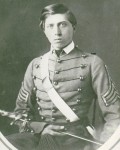 Union Lieutenant Alonzo Hersford Cushing died at Gettysburg on July 3rd, 1863. On November 6th, 2014, he was awarded the Medal of Honor, the highest military decoration in the country, for his heroism on that field of battle that day. It has taken 151 years and a campaign of more than three decades for Cushing to get this richly deserved recognition. It’s the longest gap between the act of valor and the awarding of a Medal of Honor in history.
Union Lieutenant Alonzo Hersford Cushing died at Gettysburg on July 3rd, 1863. On November 6th, 2014, he was awarded the Medal of Honor, the highest military decoration in the country, for his heroism on that field of battle that day. It has taken 151 years and a campaign of more than three decades for Cushing to get this richly deserved recognition. It’s the longest gap between the act of valor and the awarding of a Medal of Honor in history.
Alonzo Cushing was born in Delafield, Wisconsin, on January 19th, 1841. He was one of four brothers and his widowed mother struggled to make ends meet. The congressman who recommended Alonzo to West Point described her as “poor but highly committed and her son will do honor to the position.” He was appointed to West Point in 1857 and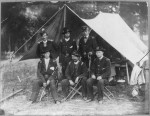 graduated in June 1861, two months after hostilities began at Fort Sumter, with a commission as first lieutenant in the U.S. Army. He was in the thick of all the most famous battles: Bull Run, Antietam, Fredericksburg, Chancellorsville, and of course, the one that would claim his life, Gettysburg. At Chancellorsville Cushing was promoted to commander of Battery A, 4th U.S. Artillery of the Army of the Potomac II Corps.
graduated in June 1861, two months after hostilities began at Fort Sumter, with a commission as first lieutenant in the U.S. Army. He was in the thick of all the most famous battles: Bull Run, Antietam, Fredericksburg, Chancellorsville, and of course, the one that would claim his life, Gettysburg. At Chancellorsville Cushing was promoted to commander of Battery A, 4th U.S. Artillery of the Army of the Potomac II Corps.
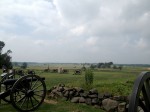 He was in command of 126 men and six cannons on July 3rd, 1863, the third day of the Battle of Gettysburg. They were positioned inside a bend in the rock wall, known as the Bloody Angle, on Cemetery Ridge that was the center of the line General Robert E. Lee hoped to break through with a massive 13,000-person infantry attack known as Pickett’s Charge. After being pounded by Confederate artillery, Battery A was all but destroyed. All the officers and most of the soldiers were dead. Only two cannons were still functional.
He was in command of 126 men and six cannons on July 3rd, 1863, the third day of the Battle of Gettysburg. They were positioned inside a bend in the rock wall, known as the Bloody Angle, on Cemetery Ridge that was the center of the line General Robert E. Lee hoped to break through with a massive 13,000-person infantry attack known as Pickett’s Charge. After being pounded by Confederate artillery, Battery A was all but destroyed. All the officers and most of the soldiers were dead. Only two cannons were still functional.
Cushing himself had been grievously wounded during the artillery assault. A shell fragment hit him in the shoulder and shrapnel gutted him, tearing through his groin and abdomen. He refused categorically to move to the rear, saying he would “stay right here and fight it out or die in the attempt.” Instead, literally holding his intestines in one hand, Cushing ordered that the two remaining cannons be moved right up to the stone wall to shoot at the three Confederate divisions of infantry advancing in rows a mile wide towards the Angle.
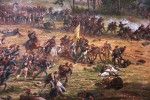 Weak and unable to shout, Cushing was bodily supported by 1st Sergeant Frederick Füger who relayed his orders to his men. He observed the charge through a field glass, and ordered his men to fire double-shotted canister, deadly anti-personnel rounds. He used his own thumb to stop the cannon’s vent, burning his fingers to the bone. With the Confederate infantry less than 100 yards away, he yelled “I will give them one more shot.” A few seconds later a bullet hit Cushing in the mouth, exiting out the back of his skull and killing him. He was 22 years old.
Weak and unable to shout, Cushing was bodily supported by 1st Sergeant Frederick Füger who relayed his orders to his men. He observed the charge through a field glass, and ordered his men to fire double-shotted canister, deadly anti-personnel rounds. He used his own thumb to stop the cannon’s vent, burning his fingers to the bone. With the Confederate infantry less than 100 yards away, he yelled “I will give them one more shot.” A few seconds later a bullet hit Cushing in the mouth, exiting out the back of his skull and killing him. He was 22 years old.
Cushing had stood his ground for more than an hour and a half after his wounding, inflicting heavy casualties and opening gaps in the Confederate lines that played an important role in the Union’s repelling Pickett’s Charge. He was given a posthumous brevet promotion to lieutenant colonel for his service at the Battle of Gettysburg, but no medal. He was buried at West Point, a very high military honor, under a headstone inscribed “Faithful unto death.”
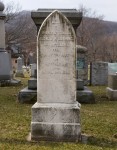 The story of Alonzo Cushing wasn’t widely known, but he was still beloved in his hometown of Delafield, Wisconsin. That’s where Margaret Zerwekh heard about it when she married her second husband and moved into his Delafield house that had once belonged to the Cushing family. An amateur historian, she researched Alonzo’s story and sometime in the 1980s (she doesn’t remember the exact date), wrote a letter to then-Sen. William Proxmire of Wisconsin recommending Cushing for a Medal of Honor. It would be the first of many, many letters sent to many, many members of Congress.
The story of Alonzo Cushing wasn’t widely known, but he was still beloved in his hometown of Delafield, Wisconsin. That’s where Margaret Zerwekh heard about it when she married her second husband and moved into his Delafield house that had once belonged to the Cushing family. An amateur historian, she researched Alonzo’s story and sometime in the 1980s (she doesn’t remember the exact date), wrote a letter to then-Sen. William Proxmire of Wisconsin recommending Cushing for a Medal of Honor. It would be the first of many, many letters sent to many, many members of Congress.
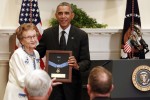 The procedure for awarding a Medal of Honor more than three years after the events being recognized are complex. First the branch of the military in which the would-be recipient served has to approve the nomination. In Cushing’s case, the U.S. Army approved his nomination in 2010. Then legislation had to be passed by both Houses of Congress to waive the three-year time limit. That took three years. Then the President has to approve the nomination. This August, the White House announced that Alonzo Cushing would be awarded the Medal of Honor.
The procedure for awarding a Medal of Honor more than three years after the events being recognized are complex. First the branch of the military in which the would-be recipient served has to approve the nomination. In Cushing’s case, the U.S. Army approved his nomination in 2010. Then legislation had to be passed by both Houses of Congress to waive the three-year time limit. That took three years. Then the President has to approve the nomination. This August, the White House announced that Alonzo Cushing would be awarded the Medal of Honor.
The deed was done at a ceremony in the Roosevelt Room of the White House attended by more than two dozen Cushing family members and Margaret Zerwekh. Alonzo’s next of kin, cousin twice removed Helen Loring Ensign, accepted the medal on his behalf.